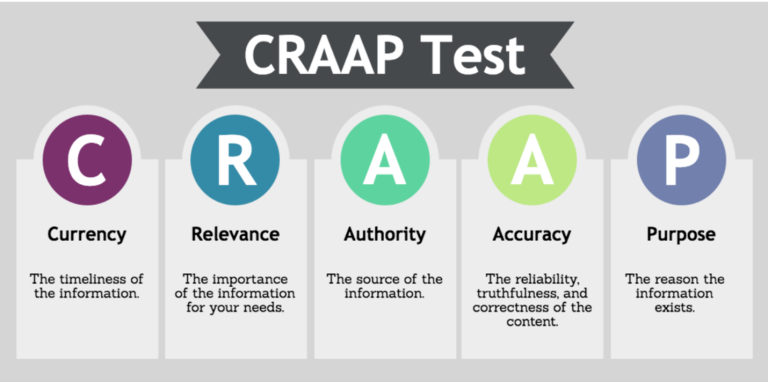5.2 Evaluating the Quality of Evidence
The “Bare Essentials” Test: A Practical Framework.
Use this “bare essentials” chart as a quick filter before you accept any evidence into your academic reasoning.

| Standard | Guiding Questions |
|---|---|
| Currency | Is the information up-to-date and relevant to current understanding? |
| Relevance | Does the evidence directly relate to the argument or topic at hand? |
| Authority | Who is the author? Is the author credible or an expert in the field? |
| Accuracy | Can the information be verified with other trusted sources? |
| Purpose | What is the intention behind the information provided? (inform, sell, persuade, entertain) |
Evaluating Statistics and Data
The following sources are strong indicators of reliable data:
- Collected by a reputable institution (e.g., Statistics Canada, WHO, UNESCO)
- Provided with a transparent methodology
- A Peer-reviewed publication
Red flags: Warnings that your data might be unreliable:
- Lack of cited source
- Data taken out of context
- Vague or sensational claims (e.g., “90% of people think…” without any further explanation)
Types of Evidence in Academic Reading
| Type of Evidence | Description | Assessment |
|---|---|---|
| Empirical | Based on observation or experimentation | Used in Science, especially social sciences |
| Anecdotal | Personal stories or case studies | Used for Illustrative purposes, but weak as proof |
| Statistical | Numbers from systematic studies or surveys | Used in Quantitative research |
| Theoretical | Based on models or concepts | Used in the Humanities and philosophy |
| Testimonial | Expert opinions | Used to add authority, especially when cited properly |
Distinguishing Fact from Opinion in Practice
Language Cues
| Signal Word | Likely Indicates |
|---|---|
| “Research shows…” | A fact (but always verify!) |
| “I believe…” or “It is my view…” | An opinion |
| “According to the data…” | A factual support |
| “Should”, “must”, or “best” | Value-laden language → usually an opinion |
Let’s Discuss: From Idea to Action
Now let’s jump from idea to action with a sample exercise:
Claim: “Online learning is more effective than traditional classrooms.”
Potential questions to ask:
- What type of evidence is provided?
- Is it personal experience or supported by data?
- Is the study recent, peer-reviewed, and widely accepted?
By examining evidence in this manner, you will develop a healthy skepticism that strengthens your academic integrity.
Now, let’s consider a key issue: the credibility and trustworthiness of our data sources, authoritative analysis, and updated information.

